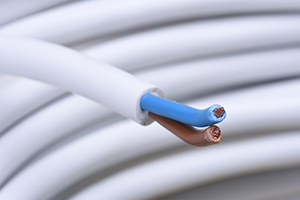In our experience there are many engineers who design cable assemblies without prototyping them first. While they will spend a lot of time designing the assembly and specifying components, the practicalities of manufacturing cable assembly are not always explored.
By prototyping cable assembly before it goes to manufacture, you can avoid many common issues further down the line. These include:
- Availability of components
- Cost of components
- Ease of cable assembly
- Environmental factors
- Quality standards
As well as addressing the issues above, prototyping can also help you streamline production if the cable assembly requires mass production.
Why Prototype Your Cable Assembly Designs?
Working with a cable assembly manufacturer on prototypes ensures that custom cable assemblies work in the real world and, most importantly, can be manufactured efficiently. Prototyping can reveal design flaws that effect functionality, but also potential problems in the supply chain and the manufacturing process.
Components are a key part of this. Currently we’re experiencing long lead times for some components such as connectors. If you only specify components based on price and functionality, without exploring availability, you could find that components aren’t available in your time frames, quantities or budget.
Another advantage of prototyping custom cable assembly is that you can get a clear idea of the cost of production. Some connectors take longer to assemble because they require soldering or specialist skills. Manufacturing costs are based on the time it takes to complete an assembly and labour costs. Prototyping a design will allow you to explore ways to speed up production and reduce costs –  for example by using components that are easier and quicker to assemble.
for example by using components that are easier and quicker to assemble.
By working with a trusted cable assembly manufacturer you can also benefit from their expertise. They can help with everything from sourcing parts to reviewing designs and making recommendations that can have a positive impact on production costs and time.
Another factor to consider is the environment the cable assembly will be used in, and what quality standards are relevant in the markets the product is designed for. Temperature, humidity, sunlight and other environmental variants can all effect the performance of the finished cable assembly; and it’s safety. Components may need to withstand certain environmental factors and that will affect the specification (and potentially costs and time frames).
Similarly, if a product is being produced for different global markets the cable assembly will need to comply with quality standards in those countries. Getting approved components that comply with non-EU quality standards can often take longer and prices also vary.
Prototyping To Mass Production
When prototyping a cable assembly you’ll most likely be working with a UK manufacturer. But when it comes to mass producing assemblies, where will that be done? Many companies prefer to get their cable assemblies manufactured outside of the UK to reduce costs. However, if the specified components are not available in the country of manufacture, it can be a false economy. Shipping components from the UK or Europe to the Far East, for example, can soon cancel out any cost benefits, or even make it more expensive.
These considerations need to be part of the design stage of your cable assembly to ensure that you get no unpleasant surprises later in the manufacturing process.






